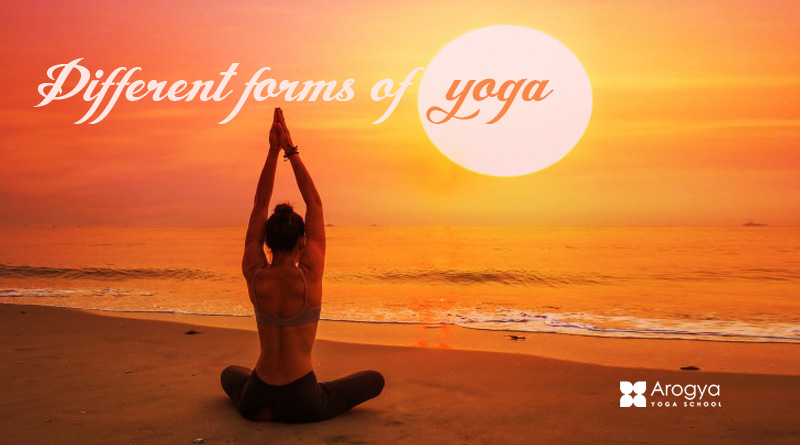
Four types of yoga is Karma Yoga, Bhakti Yoga, Raja Yoga, and Jnana Yoga. All paths lead to the same place: union with Brahman or God. To gain true wisdom, we must integrate the lessons from each path.
Karma Yoga – The Path of Selfless Action
Karma Yoga represents the Yoga of Action, a path often selected by individuals with an extroverted disposition. This practice cleanses the heart by encouraging selfless actions, devoid of any desire for personal gain or reward.
Let go of your attachment to the results of your actions and focus on a higher purpose. This helps you rise above your ego. To facilitate this process, maintaining focus by chanting a mantra during activities can be beneficial.
Karma Yoga is one of the four principal routes of yoga. A focus upon giving selflessly involves performing actions with no regard to the results.
The path is a way to do our duties with love. We should not act out of ego or seek rewards. This helps us clear our minds and grow spiritually.
Lessons from the Bhagavad Gita:
“You have the right to perform your duty, but not to the fruits of action.”
— Bhagavad Gita 2.47
“He who sees inaction in action, and action in inaction, is wise among men.”
— Bhagavad Gita 4.18
Bhakti Yoga – The Journey Of Devotion Or Sacred Love
This route is especially attractive to individuals with an emotional disposition. The force of love primarily drives the Bhakti Yogi, who perceives God as the personification of love.
Through prayer, worship, and rituals, they dedicate themselves to God. He transforms his feelings into pure love or dedication. A significant aspect of Bhakti Yoga involves chanting or singing the praises of God (Lord Krishna).
The yoga path that is spiritual is a path to self-realization as well as union in the realm of God or Higher Self. More than just physical exercises, the process encompasses emotional, mental, and spiritual growth. The following are four primary traditional paths of yoga that are each suitable for individuals with different temperaments:
Types of bhakti yoga
Practice of bhakti yoga is the path of devotion. One of the four main paths of yoga exists. Within Bhakti Yoga there are various kinds according to the character and form of devotion.
3 Forms of Bhakti Yoga
People usually describe them using nine types (Navadha Bhakti), five main emotions (Bhavas), and two general types.
1. Navadha Bhakti (Nine Forms of Devotion)
Nine ways exist for the devotee to show his devotion to the Divine:
- Sravana Sravana Listening to the stories and glories of God
- Kirtana Chanting or singing the praises and names of God
- Smarana Smarana Reminding God in all circumstances
- Pada-sevana Serving at the foot of Lord Lord (symbolic that of service in humility)
- Archana worship through offerings and rituals
- Vandana Pray and prostration
- Dasya serving God as an honest servant
- Sakhyam” Friendship” with God
- Atma-nivedana – Total self-sacrifice to God
2. Bhava Bhakti (Five Devotional Attitudes)
They are emotional connections or moods that one develops with God:
- Shanta Bhava – Peaceful adoration
- Dasya Bhava – The attitude of the servant
- Sakhya Bhava – Feeling of friendship
- Vatsalya Bhava – Parental affection (like Yashoda for Krishna)
- Madhura Bhava Madhura Bhava Sweet or romantic love (like Radha for Krishna)
3. Two General Categories of Bhakti Yoga
You can interpret bhakti devotion in two different ways.
- Apara Bhakti (Lower Bhakti) – Motivated devotion in the pursuit of financial and personal gains.
- Para Bhakti (Higher Bhakti) – Unconditional, pure devotion to God and without a selfish purpose.
Raja Yoga – The Art Of Controlling Mind And Body
Often called the “royal road,” it provides a clear way to control our thoughts. It helps us turn our mental and physical energy into spiritual energy. Raja Yoga also call Ashtanga Yoga. It focuses on the eightfold path that helps people master their minds.
The main focus of Raja Yoga is meditation. It also includes different techniques to control the body, energy, senses, and mind.
The Hatha-Yogi, from the Hatha Yoga Pradipika, uses relaxation and other practices. These include Yamas, Niyamas, asana, pranayama, and dhyana. These methods help gain control of the body and the subtle life force known as Prana. Meditation flows effortlessly when you manage your body and energy.
The 8 Limbs of Raja Yoga (Ashtanga Yoga)
The eight steps Patanjali described to attain the state of spiritual liberation:
- Yama Restraints on morality (non-violence and the truthfulness of your words, honesty, non-stealing and non-possessiveness)
- Niyama personal respects (cleanliness and self-study, contentment, discipline and giving up to God)
- Asana: practices of yoga Asana physical postures to get the body ready for meditation
- Pranayama: Control of breathing/life force
- Pratyahara Pratyahara Dissociation and reconnection of senses to objects external to it
- Dharana A focus on one point (like breath or a mantra, or even an image)
- Dhyana meditation; constant movement of attention towards the object of attention
- Samadhi Deep absorption; total union with the Divine, or the true Self
Jnana Yoga – The Yoga Of Knowledge Or Wisdom
This path is the most challenging, demanding immense willpower and intellectual prowess. By embracing Vedanta philosophy, the Jnana Yogi employs the mind to explore its own essence. We perceive the space within and outside a glass as distinct from one another.
This is like how we view ourselves as separate from God. Jnana Yoga helps the devotee feel their unity with God. It does this by breaking the glass and removing the veils of ignorance.
Before practicing Jnana Yoga, the student should learn from the other paths. Without selflessness and love for God, and strength in body and mind, the search for self-realization can just be empty thinking.
Every human being for that matter, possesses and identifies with each of these elements: Intellect, heart, body and mind. Yoga, therefore advocated everyone to practice certain techniques from each path.
Instructors teach yoga based on each person’s temperament and preferences. This means some people may focus on certain types of Yoga more than others.
Main Practices of Jnana Yoga:
1- Shravana (Listening):
Shravana, which translates to “listening,” encompasses a profound level of engagement rather than mere auditory perception. In Jnana Yoga, it means paying close attention to spiritual teachings. This includes lessons from sacred texts and wise mentors (Gurus). This practice is the first and important step in the journey of self-discovery in Jnana Yoga.
- Studying sacred texts like the Upanishads, Bhagavad Gita, and Advaita Vedanta teachings.
- Learning from a realized teacher (Guru).
2- Manana (Reflection)
Manana represents Manana is the the second stage in the pathway to Jnana Yoga, adhering to the Shravana (listening). Shravana is about receiving spiritual wisdom.
Manana means to think deeply about this knowledge. It involves reflecting on what you learned. You should consider it carefully and make it your own.
- Deep thinking and contemplation on what you have learned.
- Asking questions like: Who am I? What is real? What is eternal?
3- Nididhyasana (Meditative Absorption)
Nididhyasana is the third and final step in Jnana Yoga. It comes after Shravana, which means listening to the truth, and Manana, which is deep contemplation. A constant, deep contemplation on the reality of “I am the Self” or “I am Brahman” exists.
- Meditating deeply on the truth: “I am not the body or mind—I am the eternal Self.”
- Letting this truth dissolve all illusion (Maya).




